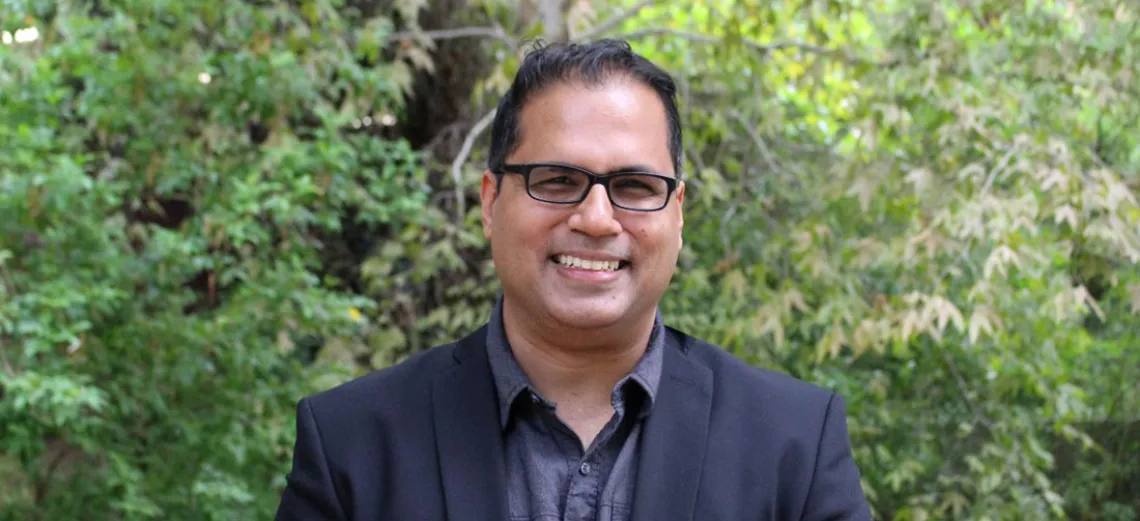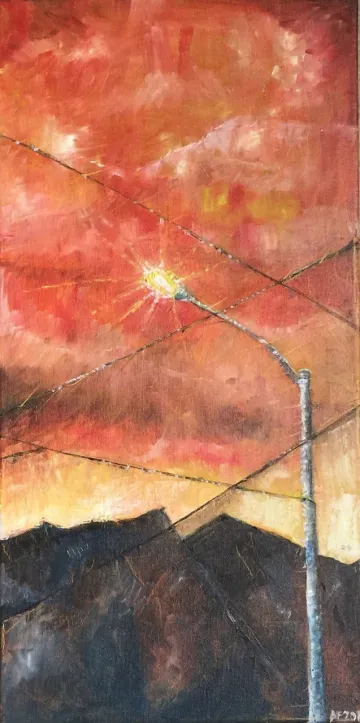Improving Design Outcomes: Altaf Engineer, Assistant Professor of Architecture

Eight Questions with Altaf Engineer, Assistant Professor of Architecture and Chair, Master of Science in Architecture Health and Built Environment Program
“In teaching, I find it effective to always discuss research with concrete examples and ideas of how it can improve design outcomes.”
Tell us a bit about yourself and what brought you to the College of Architecture, Planning and Landscape Architecture.
I have always had a deep sense of responsibility to apply my knowledge and skills to address critical health, social and environmental issues affecting humans worldwide. My joint appointment in CAPLA and the Institute on Place, Wellbeing and Performance, which links the expertise of the University of Arizona College of Medicine - Tucson, the Andrew Weil Center for Integrative Medicine and our college, gives me with the ideal setting to make an impact in these areas.
In 2015, I co-founded the nonprofit Architects for Society to develop housing solutions for displaced individuals and families. CAPLA’s impressive record of similar design-build work, local community outreach and the specifics of the job opening in health and the built environment directly tied in with these interests, attracting me to the position. I started in fall 2017.
What is your current research and what most excites you about your areas of focus?

My current research explores technological innovations in building performance and measures building performance’s physiological and psycho-social impacts on occupants to achieve better individual health and wellbeing outcomes. I study the influence of built environments on individual job performance, health and wellbeing through use of human wearable and environmental sensors for measuring stress, activity, sleep and light, and then I design interventions of different scales.
A big part of my research focus is how to translate research findings into real-world outcomes and explore innovative methodologies and tools in the field. The field is broad, which gives me the flexibility to apply for a variety of funding sources, and most importantly, gives me opportunities to participate in research that is much-needed for the health and wellness of our society. For example, I am currently working on COVID-19-related projects involving human perceptions of risk and safety in indoor and outdoor campus spaces, indoor air quality, predictive modeling and non-invasive sensor technology,
I am excited to apply research findings to real-world situations, such as the current pandemic. My research interests and background enabled me to quickly join collaborative interdisciplinary teams to perform research that will inform re-entry/re-opening procedures, and assess safety in a variety of indoor and outdoor spaces on the University of Arizona campus and beyond.
What is your current service work—at the university and beyond?
I participate in committees related to curriculum and research at the school, college and university levels. As faculty advisor for the of the Master of Science in Architecture Health and Built Environment, I work with faculty and staff to recruit graduate students as well as develop the program curriculum. As a faculty researcher at the Institute on Place, Wellbeing and Performance, a large part of my service time is devoted to developing the Institute’s program and expanding our interdisciplinary team. I also work towards forming new research and industry partnerships and influencing practice, policy and education in the field of health and the built environment.
I was recently selected for UArizona’s Inclusive Leadership Cohort Certificate, which will offer me an opportunity to grow as a leader committed to diversity, inclusion and equity — issues which are crucial.
I also work with nonprofits in Southern Arizona to develop webinars, workshops and research studies for small businesses, museums and galleries to protect the safety of their employees and visitors as they reopen. Small businesses in particular have been hit hard in the current pandemic, and they need our support at this time.
Additionally, I give a number of invited talks, webinars and conference presentations to create awareness about the importance of healthy spaces.
Tell us a bit more about your work with Architects for Society.
I continue to work with the Minneapolis-based nonprofit, which is comprised of architects from the U.S., Canada, Europe, the Middle East and India. As an organization and as individuals, we have the goal of enhancing the built environment of disadvantaged communities though innovative architecture and design. I remain passionate about offering affordable housing solutions to communities in need. For example, watch this video on our Hex House demonstration at the recent Nobel Peace Prize Forum:
What are you currently teaching, and what do you enjoy most about teaching?
As soon as I joined CAPLA, I was tasked with developing and launching a new degree subplan within the MS Arch Health and Built Environment program. The classes I teach in this program include Health and Wellbeing in the Built Environment, Social and Behavioral Issues in the Built Environment and Daylighting, Health and Behavior. I also advise graduate students on their thesis projects as committee chair or member. I am also affiliated with two doctoral graduate interdisciplinary programs: Arid Land Resource Sciences and Applied Intercultural Arts Research, where I enjoy working with Ph.D. students from different disciplines.
What I enjoy most about teaching is interacting with students from different disciplines and backgrounds, and listening to their unique perspectives on a topic. They keep reminding me of how much I don’t know, which in turn keeps me on my feet. For me, teaching and research are very interconnected.
How do you bring your wide array of research, service and practice into your teaching?
My research, service and practice influence my teaching in many obvious and subtle ways. My research work keeps me up-to-date with much of the current and cutting-edge technology and projects in the field. Students also appreciate that I am a licensed architect in the U.S. with experience and knowledge about what works in the built environment. I find it effective to always discuss research with concrete examples and ideas of how it can improve design outcomes.

"The Lampost; an evening in Tucson, AZ," oil on canvas, 12" x 24", by Altaf Engineer.
Our students come from diverse backgrounds; they appreciate that I first started out in the U.S. as an international student. Many of them are interested in knowing more about my career trajectory. My participation in the UArizona Inclusive Leadership Cohort program will, I hope, teach me how to make my classroom more inclusive and equitable.
Beyond your research, service and practice, what are your passions?
I paint (or try)—usually with oil or acrylics on canvas or wood panels. Most of my themes are representational or abstract, related to the landscapes of Arizona, or the unique lighting phenomena which occurs in this region. In late 2019, I participated in a small art exhibition at the Mexican Consulate in Tucson. I felt privileged to exhibit my art alongside many talented local artists, as well as meet some of them in person. My doctoral dissertation was on art museums, and I enjoyed spending many days inside galleries, amongst art. Being alone with inspiring objects and works brings me a sense of peace and joy. It never felt like work even for a single day!
What does the CAPLA experience mean for you?
To me, CAPLA is a physical place and location which is unique in itself, but most importantly, it represents my faculty and staff colleagues and students who work and study here. I enjoy interacting with them in and outside of the classroom. CAPLA offers a truly collaborative environment which bridges across different disciplines, positions and backgrounds.
To learn more, view Altaf Engineer's faculty page.



